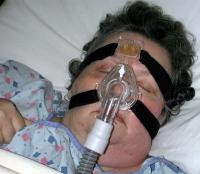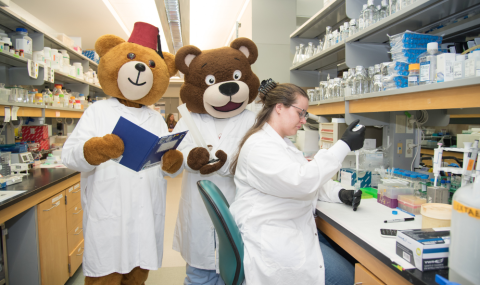Non Invasive Ventilation: Non Invasive Positive Pressure Ventilation; NIPPV; BiPAP
Non-invasive ventilation is a method of breathing support that does not require the insertion of a breathing tube.
BiPAP stands for "Bi level" or two types of positive pressure ventilation. Other names for BiPAP include, noninvasive BiLevel ventilation, Non-invasive ventilation, Non-invasive Positive Pressure Ventilation or NIPPV.
BiPAP is provided through a tightly fitting mask. The mask will cover the nose and/or the mouth. A softly inflatted rim around the edge of the mask creates a tight seal to maintain the ordered level of positive pressure.
When the patient attempts to breathe, a flow of air is introduced toward the patients mouth or nose to increase the airway pressure to a defined level. This is called the inspiratory pressure or IPAP (Inspiratory Positive Airway Pressure). The positive pressure makes it easier for a patient to take a breath in and "assists" or helps the patient. This can also make the size of the patient's breath larger.
When the patient breathes out, a small amount of pressure is maintained within the mask. This expiratory pressure is called the EPAP (Expiratory Postive Airway Pressure). The EPAP helps to prevent the small air sacs (alveoli) from collapsing and can make it easier for oxygen to enter the blood.
BiPAP can be useful for some patients by giving them enough support to prevent them from needing invasive mechanical ventilation. It can also help patient with chronic lung or heart disease to transition from invasive ventilation to spontaneous ventilation.
In very ill patients, non-invasive ventilation does not usually provide enough support. For these patients, the insertion of a breathing tube to deliver invasive mechanical ventilation is required.
Last Reviewed: October 26, 2018




